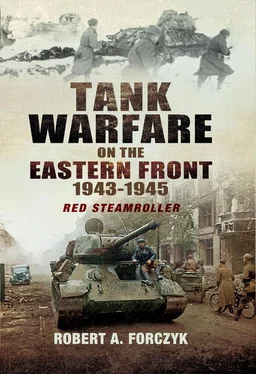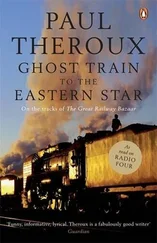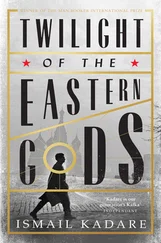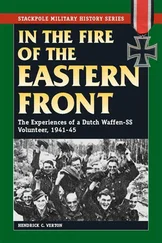One company of Tigers from s.Pz.Abt.505 detrained near Krupki, 36km northeast of Borisov, on the evening of 27 June and found itself immediately in contact with the lead elements of Vovchenko’s 3 GTC from Rotmistrov’s 5 GTA. Vovchenko’s corps was primarily equipped with Lend-Lease tanks: 110 M4A2 Shermans 70 Valentine Mk IX and 16 T-34s.* On 28 June, the Tigers tried to make a stand against the mass of the 3 GTC, but it was like a rock against the sea; the Tigers knocked out 34 tanks but the Shermans flowed around both flanks and six damaged Tigers have to be abandoned. The next day, the Tigers knocked out another 21 enemy tanks but were quickly threatened with encirclement once their ammunition was nearly exhausted and they were forced to retreat. Reaching the Berezina River, the Tigers could not cross the bridge and had to await engineer support to reinforce the structure. Once across the Berezina on 30 June, the Tigers conducted a mobile delay action to slow 5 GTA while 5.Panzer-Division deployed.
Decker’s Panzer-Pioniers wired the bridges over the Berezina for detonation while the divisional reconnaissance battalion screened along the river. However, the lead elements of the 5 GTA reached the Berezina and decided to bypass the 5.Panzer-Division roadblock at Borisov by gaining a small crossing north of the city. Several Soviet rifle divisions were right behind 5 GTA and also got troops across the river. No more German troops were coming, so Decker blew the bridges over the river. Once Rotmistrov reached the Berezina, he pushed the 29 TC across north of Borisov while the 2 GTC crossed south near Berezino. Since Decker’s 5.Panzer-Division did not yet have its Panzer-Regiment on the Berezina, he was only able to fight a delaying action before abandoning Borisov on the evening of 30 June. By 1 July, Rotmistrov was across the Berezina in force and Heeresgruppe Mitte rear elements began to evacuate Minsk. Rotmistrov decided to conduct a double envelopment of the city, sending 2 GTC as the southern pincer and 29 TC and 3 GMC as the northern pincer. Once Panzer-Regiment 31 reached the front, Decker and von Saucken elected to fight a tank battle near Pleshchenitsy, 55km northeast of Minsk, to stop the northern pincer. The battle was fought in an area covered by forests and peat bogs, which complicated tactical mobility and reduced engagement ranges to under 500 metres. Decker’s 5.Panzer-Divison fought a bitter action on 1–2 July and succeeded in stalling the northern pincer and inflicting considerable losses, but his own losses were heavy as well. On 5 July, the s.Pz.Abt.501 blew up its last Tiger and was withdrawn to Germany to refit.
However, 5.Panzer-Division could not hold off a tank army on its own and Burdeiny’s 2 TC slipped around south of Minsk virtually unopposed and began entering the city early on 3 July. A brisk fight followed but the Germans could not hold the city and Minsk was liberated by the end of the day. Burdeiny’s capture of Minsk isolated the remnants of AOK 4 and AOK 9 which were still east of the city and these formations were annihilated over the next few days. A breakout was attempted but very few units escaped the pocket and another 100,000 German troops were lost. Decker’s 5.Panzer-Division fought a brilliant delaying action but after losing more than 80 per cent of its tanks, it was compelled to retreat. Model literally had nothing left to work with – three of Heeresgruppe Mitte’s armies had been destroyed and the remaining fragments were too weak to hold anywhere. Without authorization from Hitler or the OKH, Model ordered his troops to fall back into Poland, realizing that his only option now was to trade space for time.
The collapse of Heeresgruppe Mitte created a cascading effect across the Eastern Front. Bagramyan’s 1st Baltic Front boldly pushed toward Polotsk, which was overrun on 4 July. Despite frantic efforts by Model and Heeresgruppe Nord to recreate a frontline in this sector, Bagramyan and Chernyakhovsky’s 3rd Byelorussian Front advanced into eastern Lithuania against minimal opposition. Vilnius was liberated on 13 July and Soviet armour was soon approaching Riga and the Baltic Sea, threatening to isolate Heeresgruppe Nord by 31 July. In the south, on 13 July Rokossovsky’s 1st Byelorussian Front and Konev’s 1st Ukrainian Front struck Heeresgruppe Nordukraine, which had been weakened by transfers to Heeresgruppe Mitte. Rokossovsky committed three tank armies (1 GTA, 3 GTA and 4 TA), which smashed through the PzAOK 1. By this point, large numbers of T-34/85s were available and they outclassed both the Pz IV and the StuG-III. It still took two weeks to achieve a complete breakthrough, but then L’vov fell on 27 July. Konev’s and Rokossovsky’s forces surged into southern Poland while PzAOK 1 and PzAOK 4 survived by falling back into the Carpathian Mountains. Bogdanov’s 2nd Tank Army liberated Lublin then advanced toward the Vistula, but he was wounded on 21 July and General-major Aleksei I. Radzievsky continued the advance with the 8 GTC, 16 TC and 3 TC. On 27 July, the Soviet 8th Guards Army was able to gain a bridgehead over the Vistula at Magnuszew, south of Warsaw. By the morning of 31 July, the lead elements of two Soviet tank corps were just east of Warsaw – which sparked the Warsaw Uprising by the Polish Home Army.
Due to the amazing success of Bagration , virtually the entire German front was in retreat and the Red Army was on the verge of a historic military triumph. However, Soviet logistics were strained by an advance of over 500km in one month, and it became apparent that there were not enough trucks and transport planes to keep the forward tank units supplied. Furthermore, the OKH was rushing reinforcements to Model, including 12 Volksgrenadier-Divisionen, the Fallschirm-Panzer-Division Hermann Göring from Italy and the 19.Panzer-Division from Holland. The Hermann Göring had 64 Pz IV and 31 of the new Jagdpanzer IV assault guns, while 19.Panzer-Division had 81 Pz IV and 79 Panthers – a remarkably strong force. Guderian, the new head of the General Staff, helped to orchestrate a counter-attack against the 2 TA with these two fresh divisions and Wiking and Totenkopf on the morning of 1 August. By massing over 170 tanks, the Germans were able to badly maul the 3 TC in four days of tank battles around Wolomin and force 2 TA to pull back 20km. For the only time during the Second World War, Stalin deliberately exaggerated the extent of the German victory and claimed that 2 TA could not advance to Warsaw until its losses were replaced. In fact, the Red Army had considerable strength on the Vistula by 5 August, but Stalin wanted the Germans to destroy the Home Army to pave the way for a communist dictatorship in post-war Poland.
Elsewhere, the madcap Soviet advances of July came to a halt in August. Outside Riga, Saucken conducted Operation Doppelkopf on 15–27 August, with the XXXIX Panzerkorps (4. and 12.Panzer-Divisionen) and XXXX Panzerkorps (5., 7, 14.Panzer-Divisionen) against Bagramyan’s forces in an effort to reopen the rail line to Heeresgruppe Nord. After more than a week of fighting, the operation succeeded in capturing the town of Jelgava and re-opening land communications, despite the arrival of the 5 GTA. However, Hitler refused to allow Heeresgruppe Nord to retreat through the corridor and ordered them to remain in Estonia and northern Lithuania, so Doppelkopf proved a hollow tactical victory. The Germans were less successful in Romania, where the coup in Bucharest on 23 August led to Romania switching sides. In short order, AOK 6 was badly defeated and Malinovsky’s forces were able to roll into Romania against negligible opposition. The loss of the oil from the Ploesti oilfields further exacerbated the Wehrmacht’s worsening fuel crisis and ensured the end of large-scale mechanized operations.
Читать дальше








![John Stieber - Against the Odds - Survival on the Russian Front 1944-1945 [2nd Edition]](/books/405234/john-stieber-against-the-odds-survival-on-the-russian-front-1944-1945-2nd-edition-thumb.webp)



